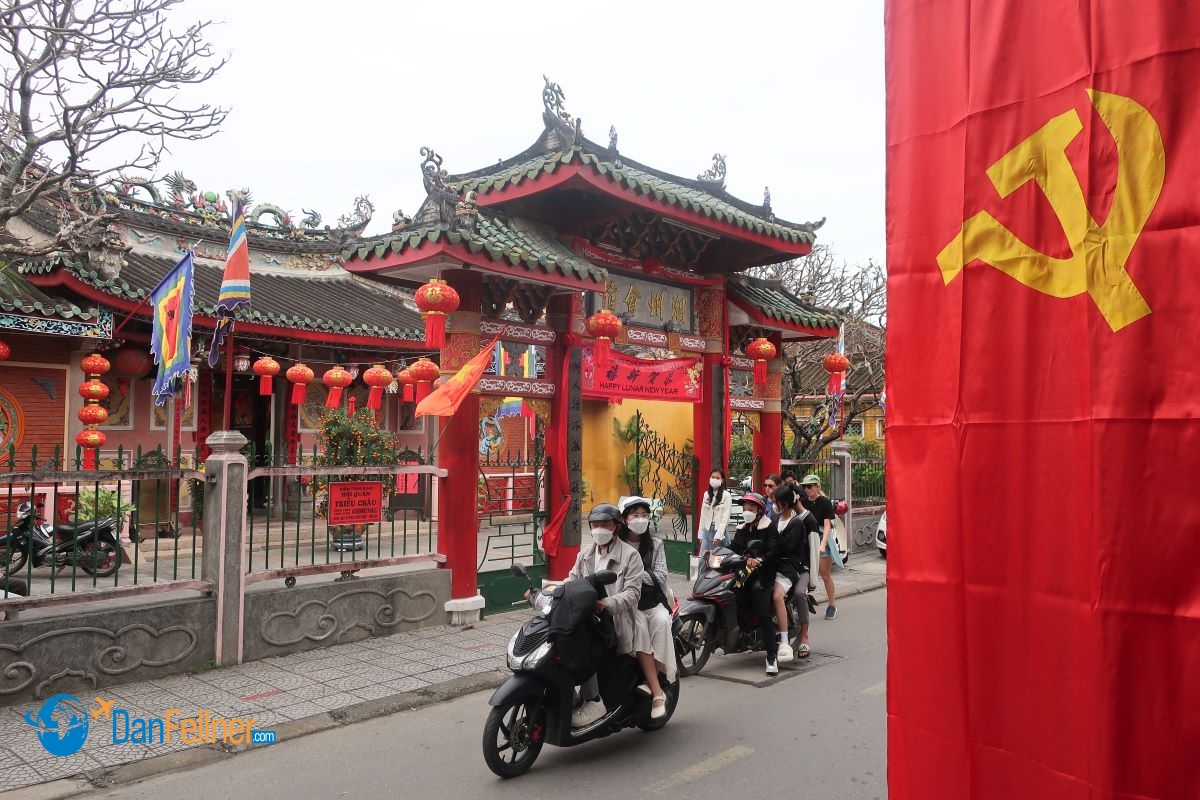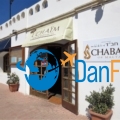Chabad House in Hoi An offers a peaceful retreat for Jewish travelers
January 28, 2023
HOI AN, Vietnam – In a pastel orange building on bustling Cửa Đại Street in downtown Ho An, hidden behind a copperpod tree draped with a flag displaying a hammer and sickle, stands one of the most remote outposts of Jewish life in southeast Asia.
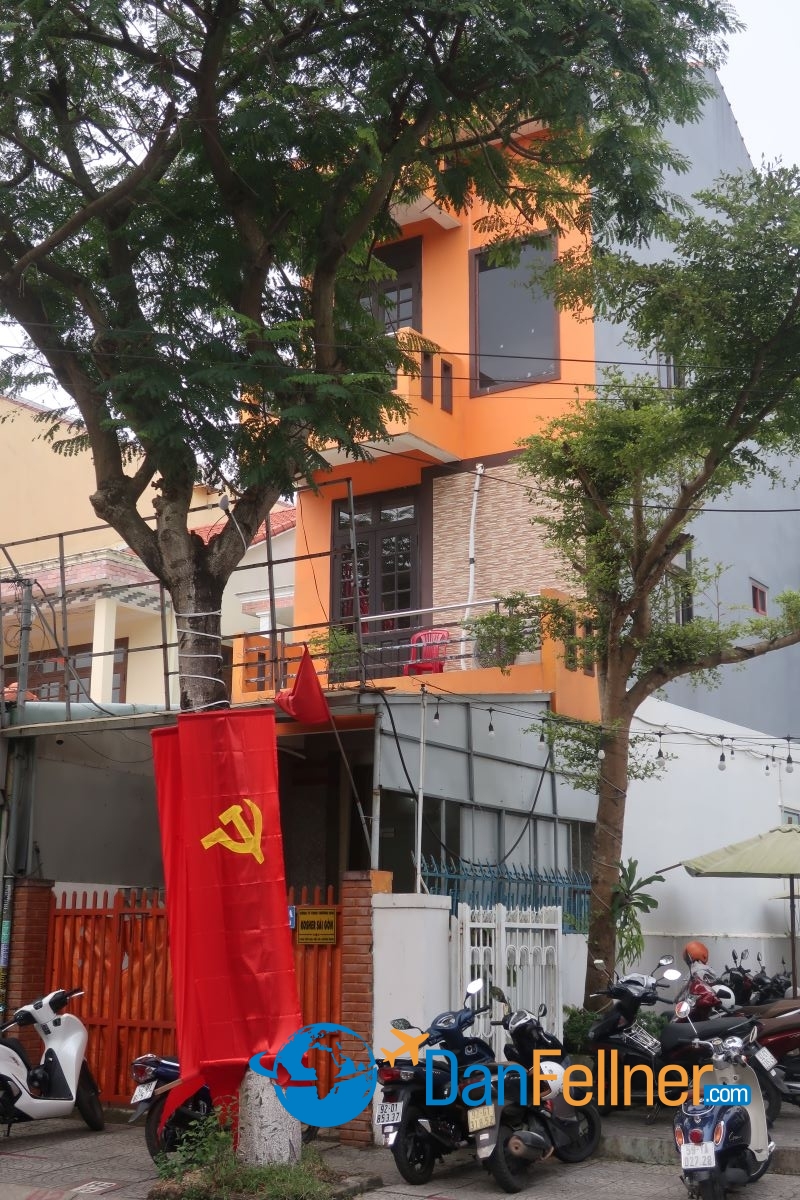
The Chabad House in Hoi An, Vietnam.
Other than a small sign on the front gate that reads “Kosher Sai Gon,” there are no indications that this narrow three-story property is a Jewish house of worship. Yet, inside visitors will find a sanctuary, Torah, kosher food and a young, energetic shaliach, Rabbi Menachem Fridman.
Chabad Hoi An, the newest Jewish house of worship in the Socialist Republic of Vietnam, opened its doors in 2018, joining two other Chabad Houses in Vietnam’s largest cities – Hanoi and Ho Chi Minh City (Saigon). Only about 300 Jews live in the entire country, not enough to sustain any stand-alone synagogues.
Hoi An is a popular destination for tourists with an old town that has been designated a UNESCO World Heritage Site. It’s located in central Vietnam on the South China Sea, about a 45-minute drive south of Da Nang, Vietnam’s fifth largest city.

Hoi An, located on the Thu Bon River, has been designated a UNESCO World Heritage Site.
With more than 2,000 years of history, Hoi An has been strongly influenced by Chinese, Japanese and Cham cultures. The crowded old town features several beautiful pagodas, museums, a huge central market, and dozens of tailor shops.
Perhaps the city’s most famous site is the Japanese Covered Bridge, built by Japanese merchants in the early 17th century on a branch of the Thu Bon River, which dissects the city. A drawing of the bridge appears on the back of the 20,000 Vietnamese Dong bill (worth about U.S. 85 cents).
While Hoi An has a population of more than 120,000, Fridman says the number of full-time Jewish residents living in the city “can be counted on one hand.”
It’s Jewish tourists who fill up the small second-floor sanctuary on Friday nights before being served a Shabbat dinner of chicken, challah, Israeli salad, matbucha and other dishes. Fridman says the norm is about 70 guests for Shabbat. Kosher meat is brought in from the Chabad in Ho Chi Minh City.
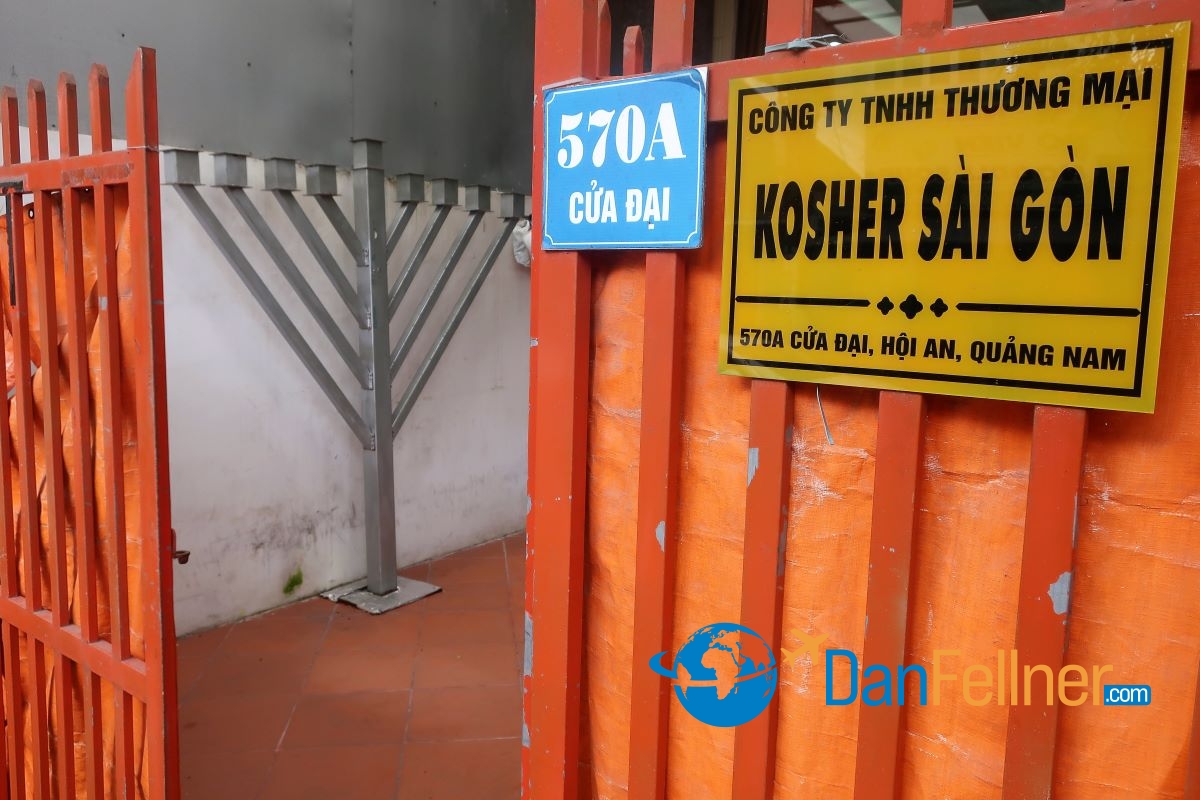
Entrance to the Chabad House in Hoi An, Vietnam.
“Most of the people coming to us are Israeli, though we have people from Australia, from the States, from Europe,” he says. “They want Shabbat. They want kosher food. They want a place they can come and feel comfortable. We’re here to cater to all Jewish needs.”
Fridman, 27, was born in Israel, raised in Moscow, and moved to New York to study at yeshiva at the age of 17. He arrived in Hoi An in late 2022 with his wife Rachel and baby daughter Chaya.

Rabbi Menachem Fridman in the Chabad Hoi An sanctuary.
During my January 2023 visit, Fridman told me the Chabad House would be opening a kosher restaurant on site within a matter of weeks. As for the menu, visitors can expect traditional Israeli food like falafel and hummus, as well as a kosher spin on some Vietnamese dishes.
“There’s a lot you can do with rice and noodles,” he said with a smile.
Vietnam is a self-proclaimed communist state, one of only five in the world. There are red flags lining the streets with the communist symbol – the hammer and sickle – and government propaganda posters are as ubiquitous as bowls of pho soup served in local eateries. Many of the posters feature the image of Ho Chi Minh.

Vietnam has three Chabad Houses — Hoi An, Hanoi and Ho Chi Minh City.
“Uncle Ho,” as he is affectionately known by the Vietnamese people, served as president of North Vietnam from 1945 until his death in 1969. With the signing of the Paris Peace Accords in 1973, the United States ended its direct involvement in the Vietnam War. North and South Vietnam were formally reunited in 1976. Ever since, Vietnam has lived in relative peace and stability.
During his time in Hoi An, Fridman says he has observed no antisemitism, calling the locals “very friendly, very respectful.”
As I left the Chabad House to explore Hoi An’s old town, about a ten-minute walk away, Rabbi Fridman gave me a couple of mementos – a blue and white kippah imprinted with a map of Vietnam over a menorah, and a bar of chocolate halva imported from Israel.
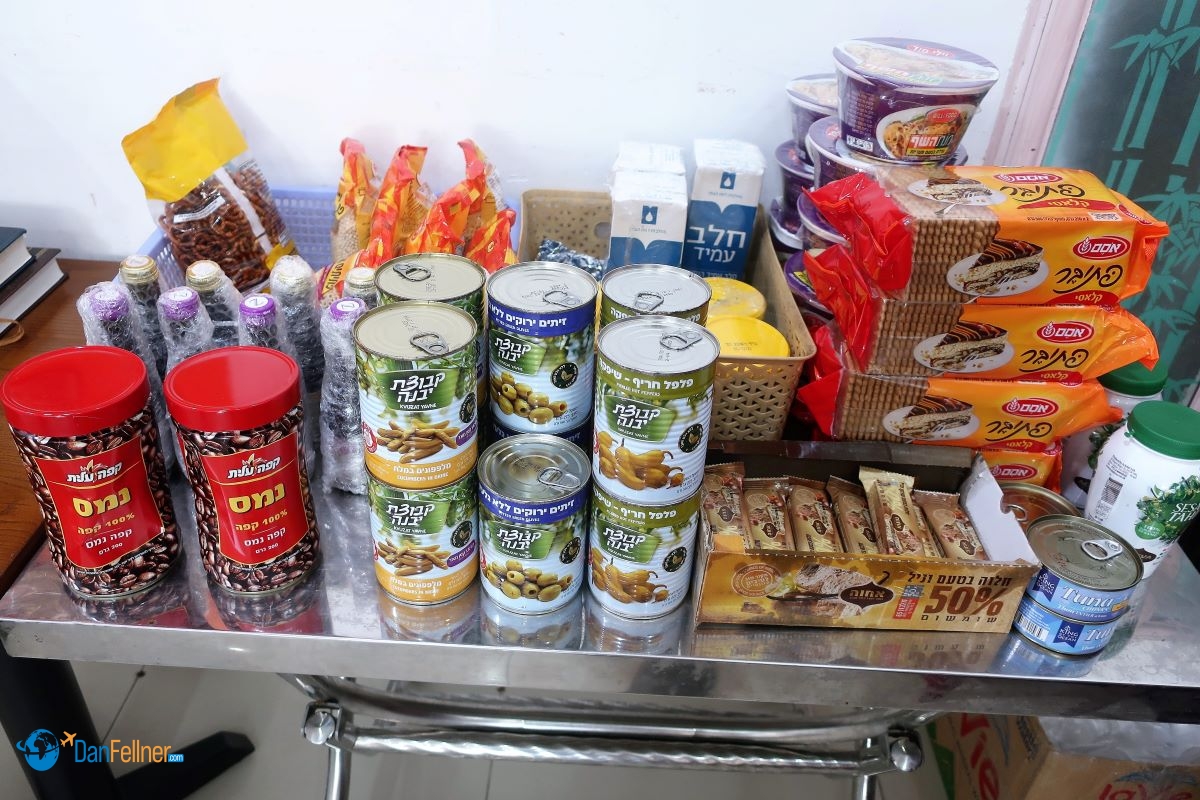
A supply of halva and other kosher foods at the Chabad House in Hoi An.
I’ve eaten a lot of halva over the years but must admit it’s never exactly been my dessert of choice. I always thought it tasted like sugary chalk.
But in Vietnam — a country that can seem so exotic, harried and even baffling at times — it felt comforting to venture out from the serenity of the Chabad House onto the frenetic streets of Hoi An having had at least a small taste of something familiar.
Website for more info:
Chabad of Vietnam

© 2023 Dan Fellner

